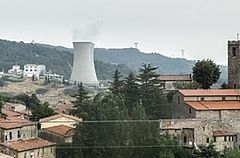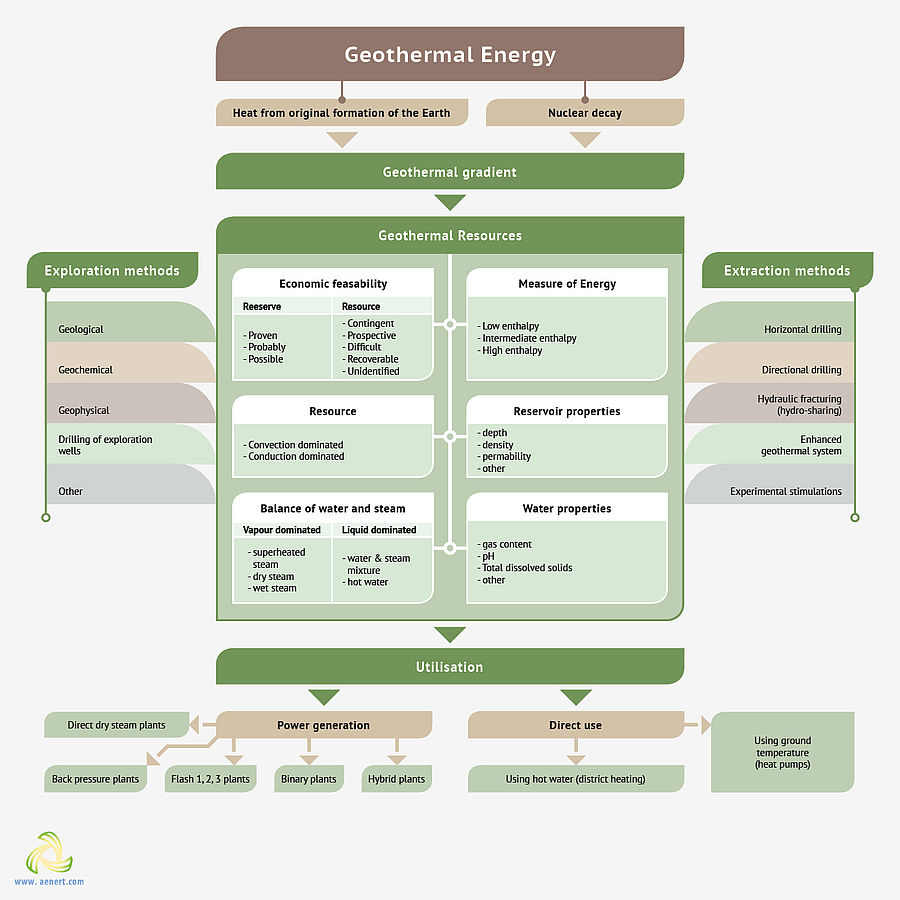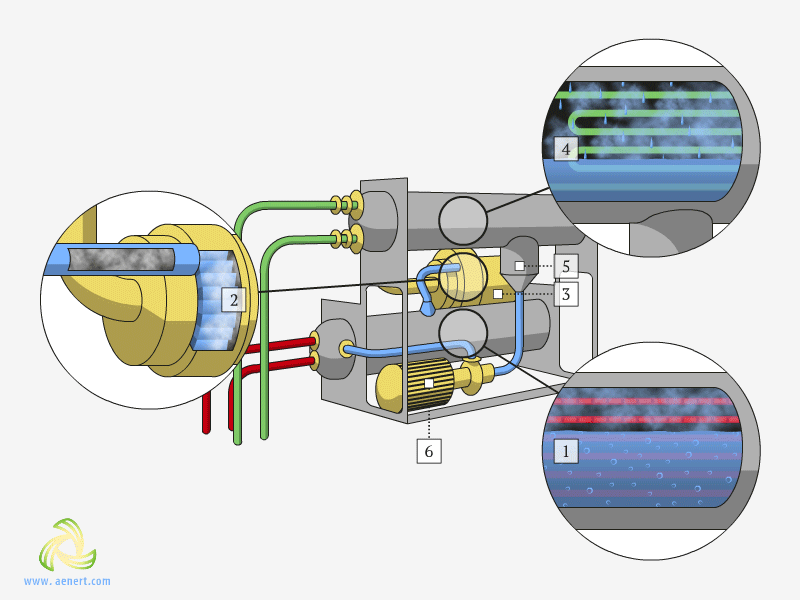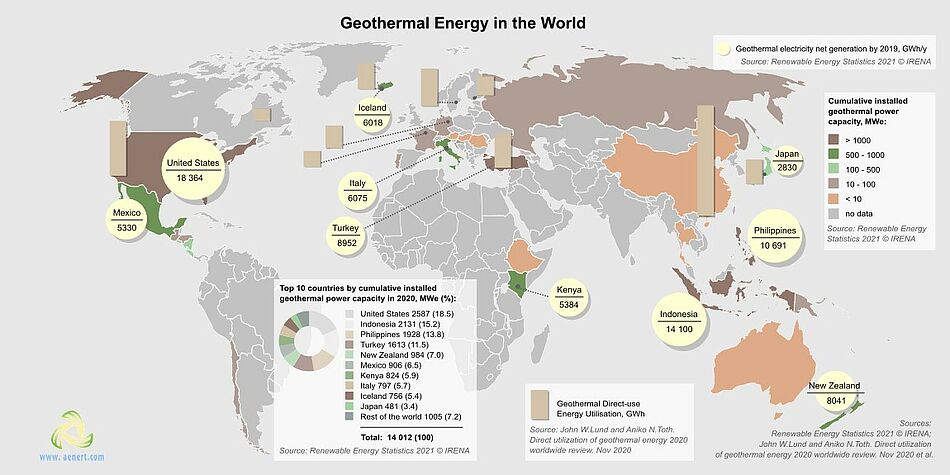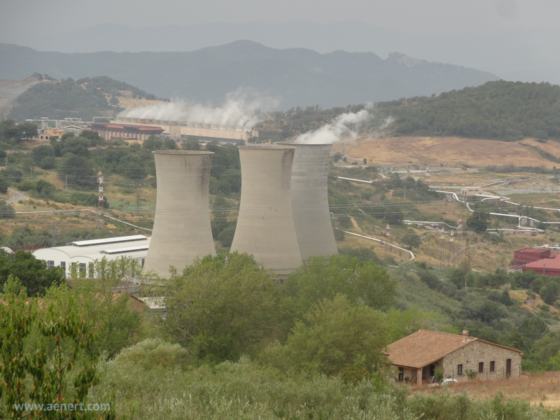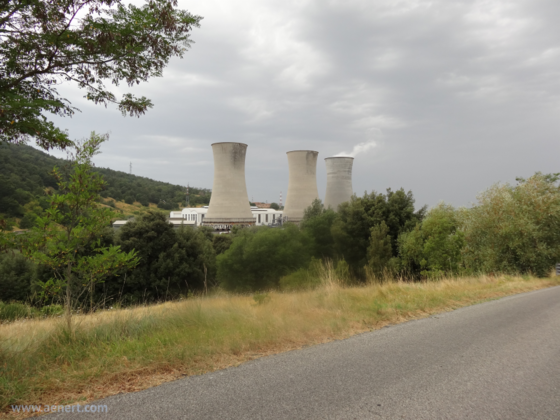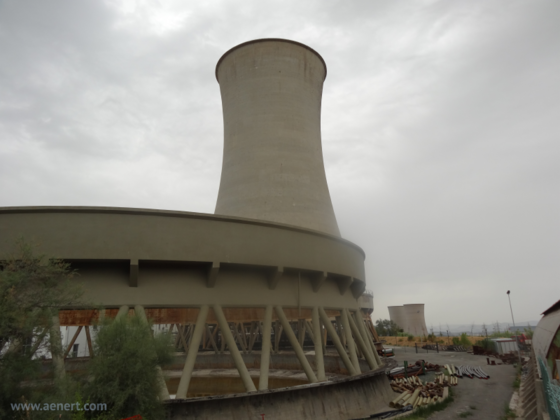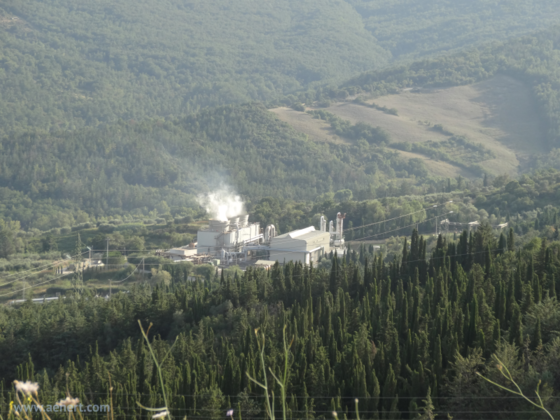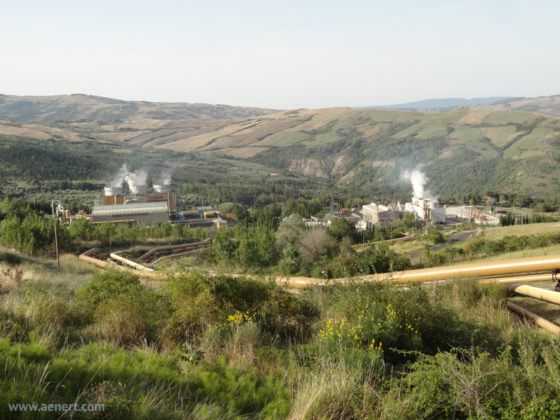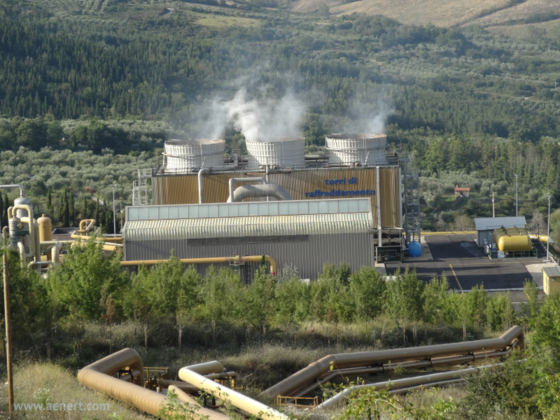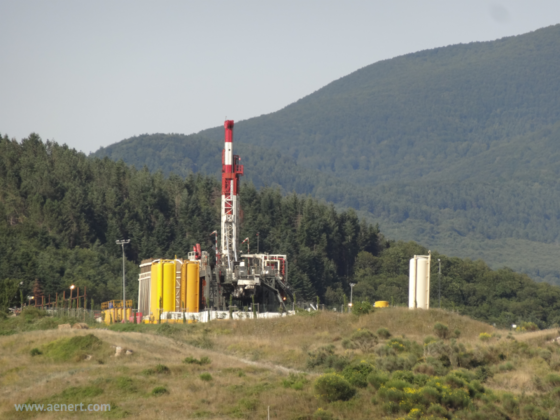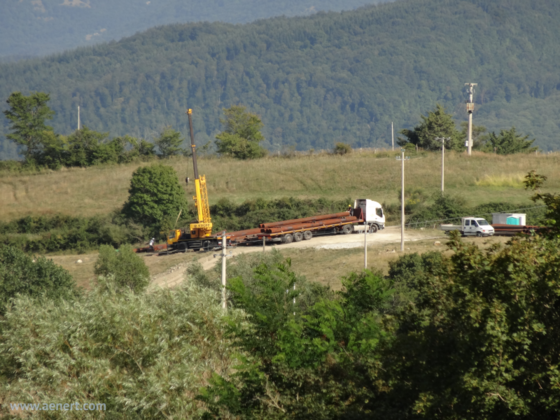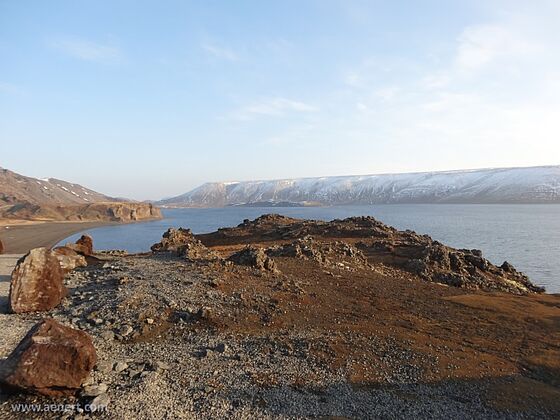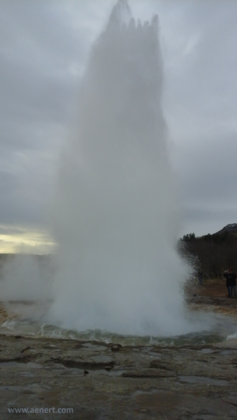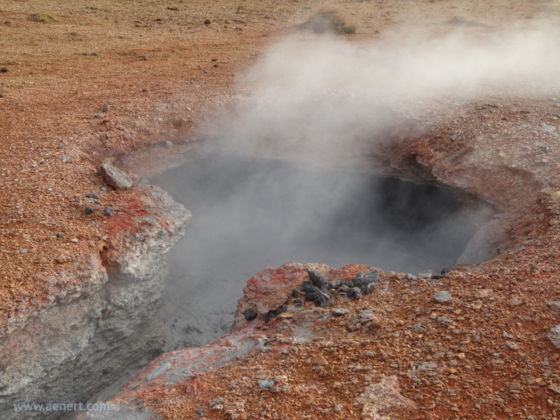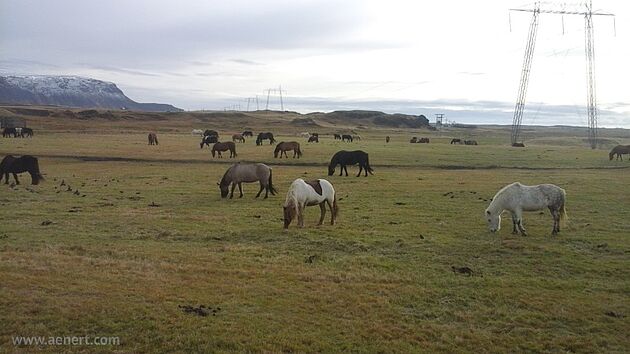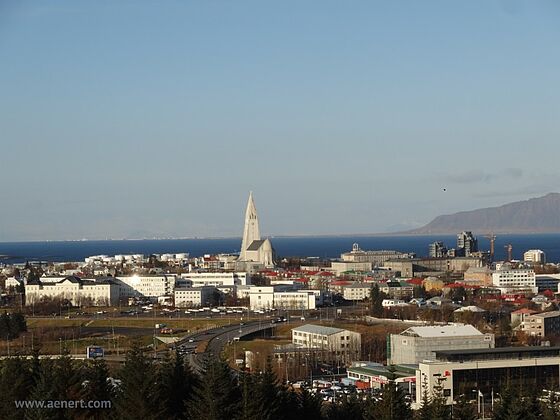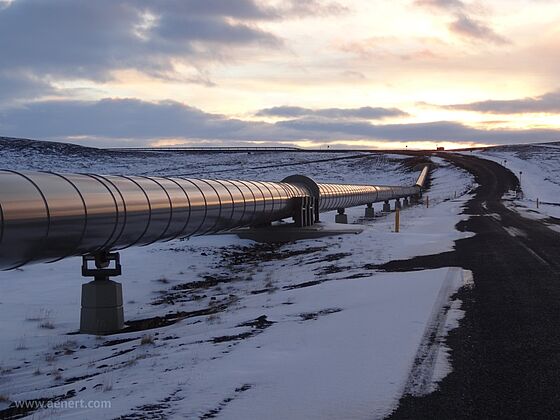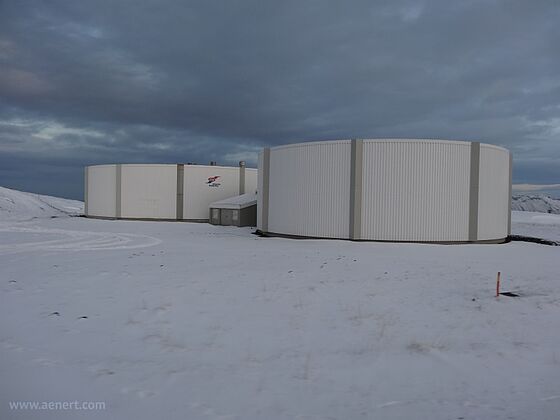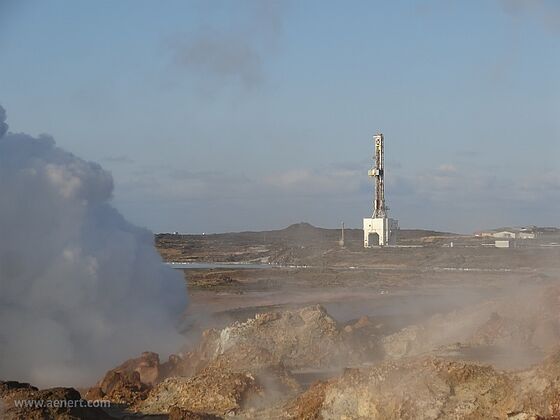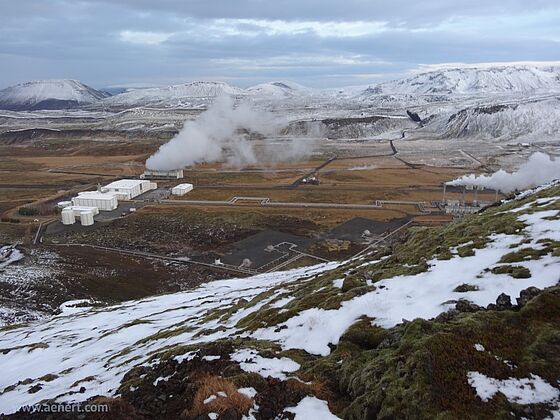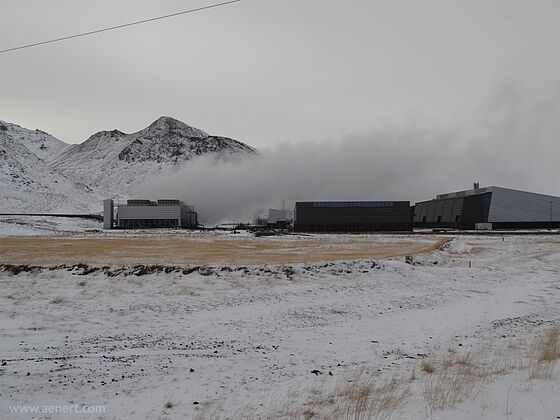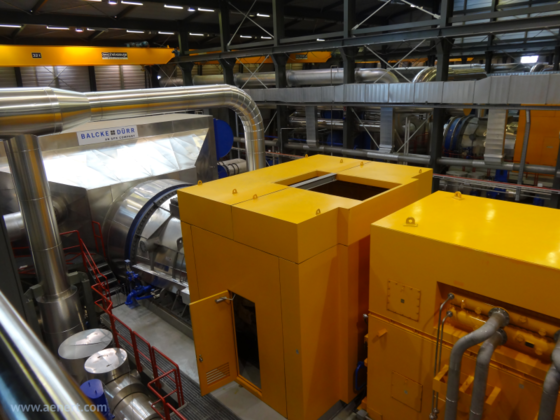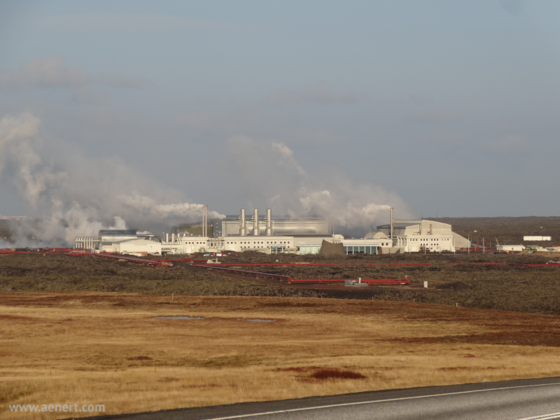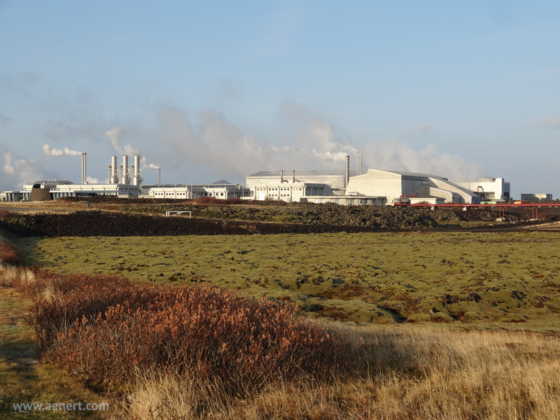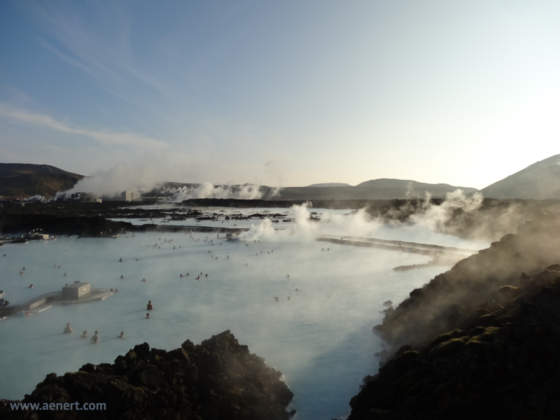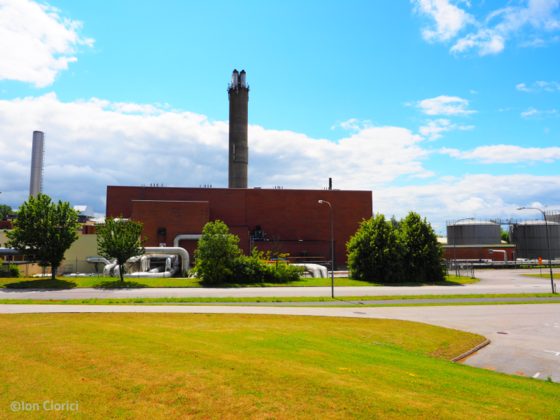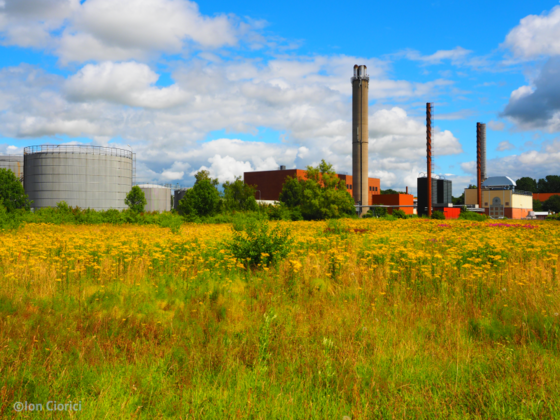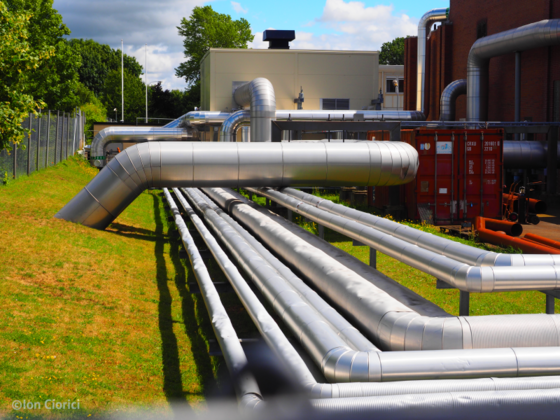Table of content
Basic definitions
Geothermal energy is one of the promising areas of modern renewable energy technology. It allows us to provide consumers with important energy products — electricity and thermal energy in the form of steam or hot water. Despite the fact that the share of geothermal energy in global total electricity production is still low (Fig. 1), it is nevertheless crucial in certain regional markets and, as of 2018, the total installed capacity of geothermal power plants exceeded 14 GW [1].
Fig. 1. Total renewable energy capacity 2017 (%)
Sources: Based on Data from IRENA (2018), Renewable Energy Statistics 2018, The International Renewable Energy Agency, Abu Dhabi
The use of thermal energy has become much more widespread. According to [2], the total Global Geothermal Installed Capacity is more than 83 GW.
Geothermal energy is a kind of thermal energy that was principally formed inside the planet Earth during its formation, and as a result of the nuclear decay of radioactive materials. The internal structure of the Earth consists of the Inner core, the Outer core, the Mantle and the Earth crust. Current research estimates that, due to the high internal pressure, the temperature at the border between the core and the mantle is around 6000°C. On the Earth's surface the temperature fluctuates between 90°C to + 60°C. Thus, between the inner core of the Earth and its surface there is a huge temperature gradient, amounting to about 2.5°C per 100 m on average. [2,3,4].
Additionally, the internal structure of the Earth is extremely uneven in its properties. There are certain areas of increased pressure with numerous fractures and cracks that allow hot magma to approach the surface, and even to burst out in the form of volcanic eruptions. Another manifestation of volcanic activity is the periodic emissions of hot water and steam in the form of geysers.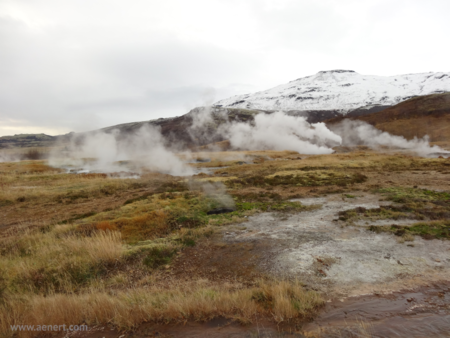
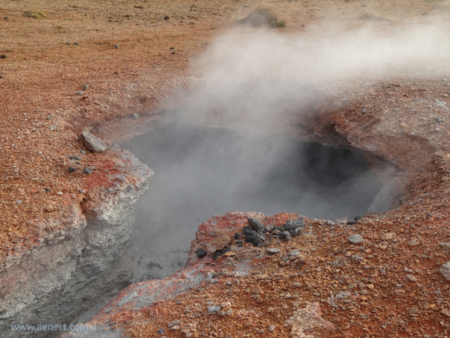
Fig. 2-3. Hot springs in Iceland
An important role in these processes is played by the collision of the lithospheric plates of the earth's crust, due to uneven internal heat transfer and the formation of areas of the earth's surface that are most vulnerable to various seismic phenomena, including earthquakes.
As the cooling of the earth's core is an extremely gradual process (and perhaps does not occur at all [5]), geothermal energy provides an almost inexhaustible source of thermal energy for the foreseeable future. The efficient utilization of this energy for electricity generation or heating forms a separate technology of modern renewable energy - geothermal energy.
A simplified diagram of the methods of utilizing geothermal energy and its main associated terms is given in Figure 4.
There are several special characteristics that distinguish geothermal resources. From an economic point of view shared geothermal resources (borrowing terms from the oil and gas industry[6]), can be considered as either Reserves or as Conditional Resources [7].
Reserves are defined as proven resources available for commercial use during a specific period of time and are divided into proven, probable or possible. Conditional resources, for which there is currently no confirmed data to assess their potential commercialization, can be divided into contingent and prospective resources. In addition, there are obviously hard-to-recover and unidentified resources.
Another important characteristic of geothermal resources is the enthalpy of the coolant as a measure of energy that can be converted to heat with specific external parameters. Since enthalpy is largely proportional to temperature [8], the enthalpy level of the system is determined by temperature intervals, although researchers are not unanimous on how to categorize this. For example, [9] proposes the following gradation of geothermal resources: high temperature > 180°C, intermediate temperature between 101°C to 180°C and low temperature from 30°C to 100°C. In [10], low enthalpy resources are limited to 90°C, medium enthalpy resources are limited to a range of 90°C - 150°C, and high-temperature resources have a temperature of more than 150°C.
In addition, there are several characteristics of the geothermal system as an ordered internal structure of the individual components of geothermal resources. From the point of view of many researchers, a list of which can be found in [9, 10], geothermal systems can primarily be classified according to the form of heat conduction used. Convection dominated geothermal systems are active or dynamic. Geopressurized systems or Conduction dominated geothermal systems are passive or static, as in these systems the low permeability of the rock and the difficult circulation of the fluid interfere with convection heat exchange.
Geothermal systems can also be divided into two large groups depending on the predominance of liquid: Liquid dominated or Vapour dominated. Here, the following terms are often used - superheated steam, dry steam, wet steam, etc., which are determined by the equilibrium state of the liquid and steam at a specific pressure and temperature.
When drilling geothermal wells (and in their subsequent operation) the depth, density, permeability, etc. is of primary importance. Also crucial are the properties of the extracted water - gas content, salt content (total dissolved solids), acidity (PH) and other properties of the underground reservoir. A list of the main methods for geothermal system analysis, as well as methods for drilling and extracting geothermal products is presented in Figure 4.
There are two main ways in which geothermal resources are utilized: for the generation of electricity and in the use of geothermal heat. Geothermal power generation stations are divided into several types (Fig. 4) depending on the type of geothermal resource.
Where dry steam is present direct dry steam plants are used, in the case of wet steam - flash binary plants, and if the geothermal resource is characterized by low enthalpy, binary type power plants are used.
Geothermal heat is employed via two main methods: either through the direct use of hot water from geothermal sources for heating (district heating) or by utilizing the temperature difference between the earth’s surface and near-surface layers (heat pumps).
Geothermal Resources
When considering the exploitation of geothermal resources, researchers will most often focus on the total thermal potential at technically accessible depths, assess the potential for electricity generation, as well as the potential for direct utilization of thermal energy.
In many cases, assessments of current technically and economically available potential is accompanied by forecasts up to 2050, based on projected developments in geothermal technology, developments which would significantly expand the available range of applications of geothermal resources. In addition, while for low-temperature intervals (less than 100°C) there is a significant correlation between the geothermal potential and the area of the territory under consideration, for available high-temperature geothermal resources (over 250°C) are concentrated mainly in areas of high volcanic activity along the Pacific Ring of Fire (about 72%) [11].
The distribution of geothermal resources is primarily determined by the geothermal gradient at different depths of the earth. The average geothermal gradient according to [8] is 2.5°C - 3°C for every one hundred meters. However, in zones featuring natural anomalies the gradient can be many times greater than the average value, up to 90°C per kilometer [11]. Clearly, despite the development of experimental research methods, assessments of geothermal resources are based to varying degrees on individual theoretical models, and do not have universal consensus among researchers.
An early work on this topic, the Electric Power Research Institute [12] in 1978, estimated geothermal resources on the world’s landmass at a depth of three kilometers, as well as similar estimates for individual countries. The total geothermal resource base for four temperature ranges (less than 100°C, 100°C – 150°C, 150°C – 250°C, and more than 250°C) were estimated at 1.2 x 1013 GWh (th), and specifically for temperatures above 250°C this estimate was 1.4 x 1011. The total electrical and thermal potentials are defined as 5.1 x 109 and 8.2 x 1011 GWh, respectively. According to the authors, Australia, Brazil, Canada, China, the USA and the countries of the former USSR possess the largest total geothermal potential (calculated in joules). There is a direct correlation between the area of the countries and the total geothermal potential. However, the most extreme temperature range - more than 250°C (joules) can be registered in Canada –7.1 * Е21, China – 8.4 * Е21, Indonesia – 6.7 * Е21, Mexico – 4.2 * Е21, USA – 8.4 * Е21 and other countries (Chile, Turkey, Russia, Peru, Kenya). Among the countries with the highest estimated electricity potential are China, USA, Indonesia, Peru and Mexico.
Natural geyser, Iceland
According to [13] the Global geothermal technical potential is estimated at 118 EJ/yr (to 3 km depth), and is even larger for depths up to 10 km m - 1,109 EJ/yr. Keeping in mind, that one exajoule (EJ) is equal to one quintillion (1018) joules. The geothermal technical potential for direct thermal use is estimated to range from 10 to 312 EJ/yr. According to the authors' calculations, the global geothermal technical potential is comparable with the total global supply of primary energy in 2008.
The fundamental study shown in [14] is a review of the geothermal resources of a number of countries around the world, as well as 18 regions divided according to their Global Energy Assessment (GEA) classification. For example, for the United States, the theoretical potential is 4.738 * E6 EJ. The technical potential heat for direct utilization is 7.0 EJ/yr and for heat to produce electricity –75 EJ/yr.
The economic potential for the same applications is significantly lower — 1.215 EJ/yr and 34.9 EJ/yr, respectively. At the same time, a multiple increase in the volume of utilization of geothermal energy on a global scale by 2050 is predicted to be up to 1 167 TWh/yr compared to 67 TWh/yr in 2010.
An assessment of the existing and prospective economic geothermal potential in the countries of the European Union was made in [7]. The calculations were made for different levels of LCOE - Levelized Cost of Energy – 200 EUR/MWh in 2020, 150 EUR/MWh in 2030 and 100 EUR/MWh in 2050. The change in geothermal potential ranged from 144TWh in 2020 to 174TWh in 2030 and, finally, for large-scale enterprises, more than 4,000TWh in 2050. In addition to the traditionally well-known countries at the forefront of geothermal industry (Turkey, Iceland, Italy), France, Germany, and Spain have the potential to lead geothermal production by 2050. This paper also contains maps of geothermal resources of the EU and individual countries.
A detailed list of countries of the world with data on their geothermal resources can be found in [15]. Indonesia (29,000 MWe), Japan (23,000 MWe), Pakistan (12,000 MWe), Mexico (10,500 MWe), Kenya (10,000 MWe) are among the countries with extensive geothermal resources for electricity production (all the data is provided with links to different authors). In [16], the top five for this indicator are defined as follows: USA –30,000 MWe, Indonesia - 27,790 MWe, Japan – 23,470 MWe, the Philippines and Mexico – 6,000 MWe each.
Additional information on geothermal resources of regions and countries of the world, including detailed maps of geothermal resources, can be found in [17–40].
Mainstream technologies
Most geothermal technologies, excluding the individual application of direct use heat pumps, involve drilling wells to provide access to steam or hot water. Currently, much attention is being paid to improving the drilling of geothermal wells. This is due not only to the high cost of this process — from 30% to 50% of the total cost of the geothermal project [18, 41], but also due to the fact that improvements can significantly expand the boundaries of the technical and economic potentials of geothermal resources.
Despite the fact that in long-term technical practice, drilling relies primarily on hydrocarbon production technologies, geothermal drilling has its own technical and, most importantly, economic features. When drilling geothermal wells, it is water that is extracted in one form or another, as opposed to oil or gas (the predominant financial drivers of modern energy technology). Hence, a significant constraint in geothermal energy when utilizing the developments in drilling for oil or gas is that the resulting product cannot yet have the same price and surplus value.
Nevertheless, many different experimental technologies and equipment are used to increase the economic efficiency of drilling. In [18], in particular, jetting, high-performance drill bits, thermal drilling (spallation, molten ion penetration, plasma bit), direct stream, millimeter waves, high-voltage electrical impulses are mentioned. Obviously, the use of these and similar technologies will grow as more practical experience is gained in larger-scale operations in drilling for oil or gas, and it is unlikely that it will only be the prerogative of geothermal energy itself.
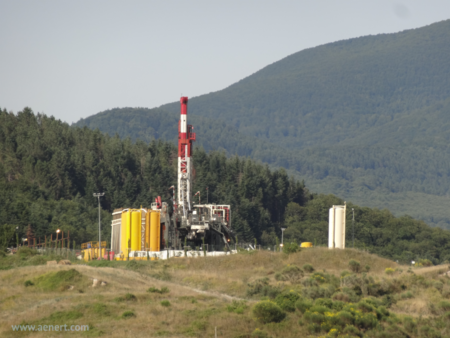

Fig. 5-6. Drilling rigs for drilling geothermal wells in Italy and Iceland
Another equally important method for increasing the efficiency of geothermal wells is to better utilize geothermal resources by increasing the permeability of rocks. High hopes are placed on so-called enhanced geothermal systems (EGS) [7, 9, 19, 43, 44], which create or expand the potential of existing geothermal resources located in low-permeable rock. An additional impetus to the development of this technology was provided by the unique success in the production of shale oil and gas in the United States using directional drilling and hydraulic fracturing, the success of which led the US to rapidly become one of the world's leading producers of these hydrocarbons. The technique involves drilling a large number of vertical and horizontal wells in a concentrated area containing hydrocarbons enclosed in low permeable rock, injecting special chemically active fluids into these wells with and hydraulic fracturing from the using pulsed water hammer. These fluids also contains solid particles — proppants, that prevents the collapse of the newly formed fractures.
As a result of this process the permeability of the rock increases dramatically, which allows for the extraction of oil and gas using traditional methods. In geothermal practice this process is often referred to as hydro-shearing. Certainly, the large-scale application of such technology in “hot dry rock” [45] rich in geothermal resources but outside areas of high volcanic activity, could be a real breakthrough in geothermal energy. In [19] it is noted that several countries are carrying out experimental studies in this area. The greatest successes have been achieved in France (1.5 MW, pilot site at Soultz-sous-Forêts, France) and Australia (25 MW, Australia’s Cooper Basin).
However, the straightforward transfer of the achievements of the “shale revolution” to the geothermal sector is not without complication. It should not be forgotten that hydraulic fracturing technologies have only been implemented on a large scale in the United States and specifically for shale rocks that are ideally suited for this technology, given their inherent properties (primarily the layering of the structure and relatively low durability, which contributes to cracking). To date, similar technologies on an industrial, but limited scale have only been implemented in Canada, China and Argentina. Attempts to extract oil distributed in more durable rocks (tight oil) – a characteristic of geothermal resources - are still experimental. Another issue that needs to be addressed is related to the use of aggressive chemicals in hydraulic fracturing, the disposal of which is expensive and can significantly lower the overall economic performance of such projects.
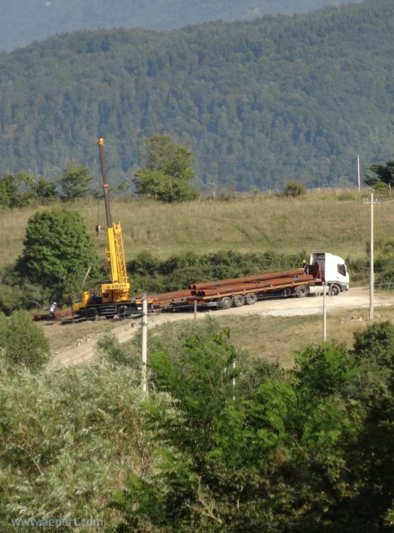
Fig. 7-8. Left – drill bits for well drilling. Right – laying of geothermal pipelines.
In addition to drilling and its related operations, another important aspect of geothermal energy, is the effective utilization of the extracted geothermal resources. Geothermal power plants have the most complex technical hierarchy for power generation. It is principally determined by the characteristics of the extracted steam: enthalpy and the balance between steam and water. Various types of geothermal stations are described in detail in [10, 18, 19, 40, 44, 46, 47, 48].
Direct dry steam technologies are used at a steam temperature of at least 150°C and with a water content of at most 0.005% (superheated steam). A general view of this type of installation is shown in Fig. 9.

Fig. 9. Dry steam power
Today, approximately 22% of all geothermal power plants in the world operate on dry steam - mainly in the USA, Italy and Iceland. Steam coming from a production well is fed directly to the steam turbine blades causing them to rotate together with the generator rotor, located on its shaft in the stator winding where ultimately electricity is generated through the transformer to the grid. The spent fluid is cooled in a cooling tower and returned to an underground reservoir via an injection well. This option is economical, technically proven and effective. However, dry and clean steam is not a commonly available resource.
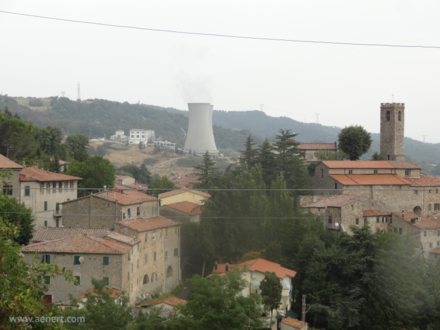

Fig. 10-11. Larderello, Tuscany, Italy - the historical area where geothermal energy originated. Geothermal power plants here have been working on dry steam for over 100 years. The total capacity of 34 stations in Larderello is more than 700 MW.
Flash geothermal plant technology is used when the water content in the produced steam or other mineral impurities exceeds those of dry steam. Its operating temperature is usually at least 180°C [18] - Fig. 12.
Fig. 12. Flash and Double Flash Cycle
The main distinctive element of this technology, when compared to dry steam is the presence of wellhead separators and high and low-pressure flash crystallizers.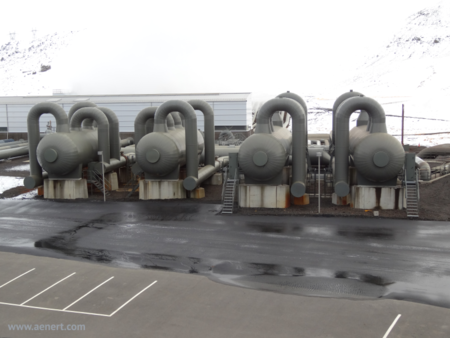
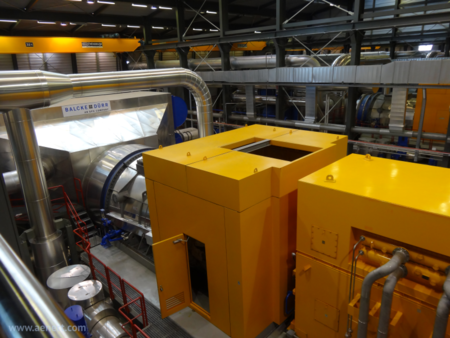
Fig. 13-14. The main elements of the geothermal station. On the left - separators for separating water and steam - (wellhead separators). On the right is a steam turbine and a generator. Iceland – Hellisheidi Geothermal Power Station.
These elements are required due to the need to separate liquids and other impurities from the steam-water mixture, while also extracting steam from the superheated liquid. This is accomplished through the use of various inertial separation methods, as well as by reducing the pressure at the inlet to the flash crystallizer, with the result that part of the superheated liquid evaporates and turns into steam.

Fig. 15-16. Iceland, Single Flash geothermal power plants. Left – Nesjavellir Geothermal Power Station, 120 MW; Right – Hellisheidi Geothermal Power Station, 303 MW (low pressure steam).
This technology is presented in more detail in [49-52].
Flash technology is the most globally prevalent technology and accounts for about two thirds of the number of existing geothermal stations [18, 40]. Depending on the number of flash cycles they can be categorized as Single flash, Double flash or Three power flash.
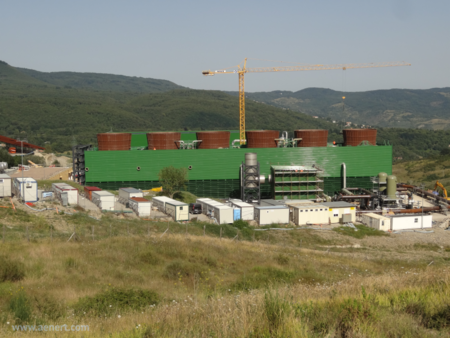
Fig. 17-18. Tuscany, Italy. On the left is the Bagnore 3 station, with a capacity of 20 MW. On the right is the construction of one of the most modern Bagnore 4 stations, with a capacity of 40 MW, managed by Enel Green Power. Geothermal resource – water dominated.
When dealing with low-temperature resources (or resources that have aggressive impurities in it), binary cycle geothermal stations are used, Fig. 19.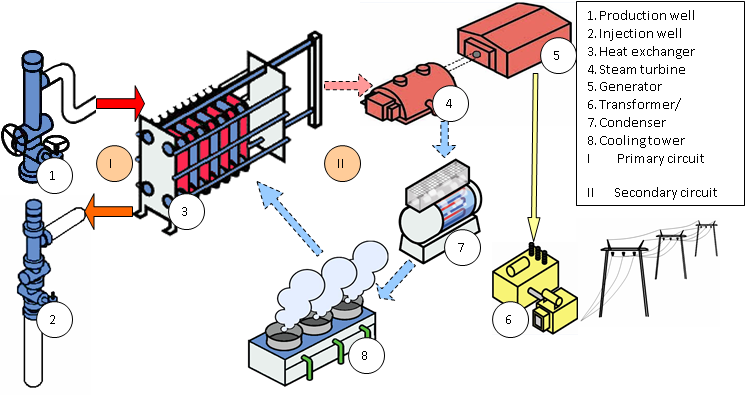
Fig. 19. Binary Cycle geothermal power plant
An indispensable element of this scheme is a heat exchanger in which heat is exchanged between the first and second cycle fluids, and in the latter case, in addition to water, various organic liquids with a low boiling point can be used, which allows for the disposal of liquids with low enthalpy up to 74°C. The most promising is a mixture of ammonia and water (Organic Rankine Cycle (ORC) or Kalina plants) [18].
The conversion of heat to work takes place through the thermodynamic Rankine cycle [48, 53].
A huge advantage of binary installations is they offer the possibility of a gradual modular increase in the capacity of a geothermal station, since high capital costs are a significant disadvantage, fig. 20-21.
-
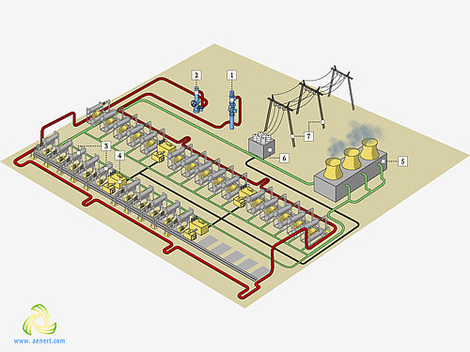
1. Injecjen well 2. Production well 3. Binariy cycle system module 4. Step up transformer/alternator 5. Cooling tower 6. Transformer 7. Electricity grid
Fig. 20-21. Organic modular configuration and Organic binary power plants by Raser's binary geothermal concept
Binary type geothermal stations with an organic cycle are the fastest growing sector of geothermal energy. For example, in the EXERGY portfolio there is more than 370 MW (including those under construction) installed capacity of this type around the world, and Turboden (a division of Mitsubishi Heavy Industries) has more than 500 MW. The undisputed leader in this area is US company Ormat.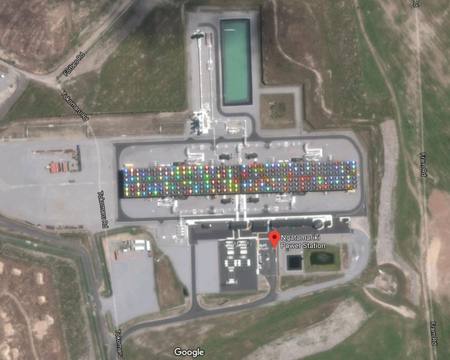
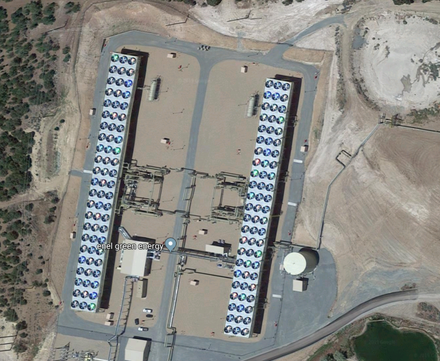
Fig. 22-23. Binary type geothermal stations developed by Ormat. Left: New Zealand, Ngatamariki Binary Plant, 95 MW; Right - USA, Cove Fort Binary Plant, 27 MW.
Photos: Google Maps
In addition to the above geothermal configuration options, it is necessary to mention back pressure turbines, which have the lowest capital costs but also low efficiency. They are found in combined cycle and hybrid installations [44, 47, 54, 55].
For example, ENEL in the United States implemented a project (The Stillwater project) of a hybrid station that includes a geothermal plant, solar PV and a CSP plant [56]. This combination provides round-the-clock operation of the hybrid station, which is difficult to achieve for single standing solar stations.
The direct use of heat from low-temperature geothermal resources is a promising area in the development of geothermal technologies. Technically, the implementation of such technologies does not present any insurmountable problems, especially since many countries already have a feasible experience using this technology. Direct use of geothermal heat has reached the highest level of development in Iceland.


Fig. 24-25. Iceland. On the left is the capital Reykjavik, some streets of the city are heated by means of geothermal heat. To the right is the Blue Lagoon resort (The Blue Lagoon is a geothermal spa), supplied with warm water from the nearby Svartsengi Power Station geothermal station.
According to [57], in 2017, there were 288 geothermal district heating plants in Europe with a total geothermal heat production of 11.7 GWh / year.

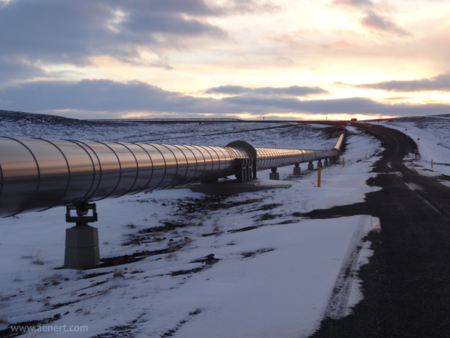
The Lund geothermal heat pump plant, 5.6 MW, Sweden
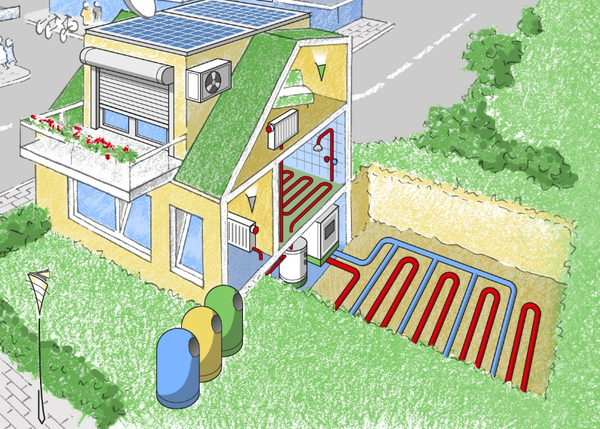
Fig. 28. Geothermal Heat Pump
More detailed information about this technology can be obtained in [58 and 59].
In Europe, this technology has received the greatest development in Sweden and Germany. According to [57], the Geothermal heat pump stock in Sweden exceeds 500,000 units, and in Germany 350,000 units. In [59] it is reported that 50,000 geothermal heat pumps per year are being installed in the USA.
Advantages and disadvantages
Applied technologies of geothermal energy, as with any technology, have their own advantages and disadvantages. Some of them are applicable only to geothermal energy; others are more or less inherent in any energy technology and can be ranked by comparison.
The first question that geothermal operators face is what costs will be required to maintain the working pressure in the underground aquifer to ensure its “renewability”. The principal technical solution to this issue is quite simple: in addition to the extractive well, any geothermal system also includes an injection well, through which water is returned to the underground reservoir to maintain the geothermal resource in working condition. However, it should be noted that part of the recycled water is lost irretrievably during individual technological operations, particularly during cooling. The situation becomes much more complicated if the extracted resource contains an unacceptable amount of toxic impurities and aggressive gases, which either leads to early corrosion of the equipment and environmental pollution, or requires expensive waste disposal and additional expenditure operations. It is important to remember that in most cases geothermal stations (except heat pump technologies) are physically tied to the location of the geothermal resource and the infrastructure of these areas is not always conducive to solving these problems, and their potential remoteness may make it difficult to deliver the finished product to consumers.
Another problem associated with geothermal energy - and other technologies that use drilling operations - is the induction of seismicity [18]. There is a lack of clarity surrounding this issue, however it is difficult to ignore, especially in connection with the development of EGS. Negative public reaction in Switzerland to the growth of seismic activity after drilling geothermal wells is one example of this. With the accumulation of statistical data and special studies, the ability to evaluate seismic activity will be added to practical quantitative techniques available to geothermal operators.
While acknowledging these potential negatives, it is necessary to note a number of serious advantages of geothermal energy, especially when compared with other renewable energy technologies. These advantages are primarily the uninterrupted generation of energy and the high capacity-factor. In [60], referring to Bloomberg New Energy Finance, it is stated that in 2010 the average global power factor of geothermal power plants was 73%, which is comparable with that of traditional fossil-fuel based facilities. In specific locations, notably in Iceland, Indonesia and Mexico, these values exceed the world average. Currently, these figures are not achievable for the leaders of renewable energy - wind energy and photovoltaics.
The most expensive technology involved in the utilization of geothermal energy is the production of electricity, and capital costs are the most significant component in the overall economic costs of operating a geothermal power plant. In turn, in [9], it is noted that approximately half of the capital expenditures are spent on maintenance of the station's geothermal resource supply system. In [61], cost and performance estimates were calculated for geothermal power generation technologies. Total costs are estimated at $5940 / kW for stations with a conventional station supply system and $9910 / kW for EGS. In the first case the costs for the creation of wells and the power supply system are calculated as 26% and 8% of the total costs, respectively and in the second as 39% and 13%, respectively. This example clearly demonstrates the problems of the development of geothermal technologies; the capital costs even for stations with a conventional supply system are comparable with those for nuclear power plants 6100 / kW ±30% and significantly exceed the costs for the construction of a coal station - 2890 / kW ±35% [61]. Source [44] provides data on the total installed cost of a geothermal station in Indonesia with a capacity of 110 MW. The cost of the supply system in this case was: Exploration wells - 4%; Production wells - 15%; Injection wells - 4%; Test wells - 1%; Steam field development - 14%; Infrastructure - 7%. The cost of building the power plant itself (Power plant) is estimated at 42% of the total expenditure.
Сapex significantly depend on the enthalpy of the geothermal resource, its depth and the permeability of a reservoir. In [18] it is calculated that Capex can vary significantly from about 8000 EUR\KWe to 24 000 EUR\KWe depending on the resource temperature (from 150°c to 180°C), its depth (3 - 5.5 km), pumping speed and the permeability of the rock (from 50 to 150 kg / sec.). An additional burden for investors is the one-time capital expenditure during the construction of most types of geothermal stations. Binary stations are an exception due to the fact that capacity expansion can occur gradually with the introduction of new units, which significantly reduces the investment load.
Forecasts of changes in capital and operating costs are given in [44]. For binary type stations, CAPEX is projected to decrease (2020 - 2050) from 6343 - 7743 EUR/KWe to 4572 -5620 EUR/KWe, and for flash installations from 2500 - 5370 EUR/KWe to 2500 - 4010 EUR/KWe. This source also provides data on the levelized cost of energy (LCOE), which strongly depends on the type of station, its power (output) and location. The main data density lies in the range of 0.05 - 0.1 USD/KWh, occasionally rising to 0.15 USD/KWh.
Geothermal energy statistics
Extensive statistics on geothermal energy can be found on the websites of various international and national organizations and companies, for example, IRENA, IEA, EIA, WEC, BP, etc. The generalized data on the direct utilization of geothermal energy, as well as on the production of electricity for the leading countries of the world, are shown in Fig. 29.
Fig.29. Indicators of the use of geothermal resources in the world![]() Geothermal_energy_in_the_world[0.57 MB]
Geothermal_energy_in_the_world[0.57 MB]
The world leaders in the use of direct geothermal heat are China, the United States and Sweden. The United States, Indonesia and the Philippines, as of the end of 2017, lead in terms of installed capacity of geothermal power plants, as well as in electricity generation [9, 62].
There was no substantial growth in capacity for the production of electricity from geothermal resources and, accordingly, the production of electricity from this source globally over the past 10 years (Fig. 30) and was significantly less than 10% per year.
Fig.30. Installed capacity and power generation from geothermal resources over the past 10 years in the world
Source: Based on Data from IRENA (2018), Renewable Energy Statistics 2018, The International Renewable Energy Agency, Abu Dhabi
However, according to calculations [1] in 2018, the total installed capacity reached 14,369 MW, which is 11.27% more than in the previous year. At the same time, the list of top 10 countries remained unchanged in comparison with the previous year. Electricity generation (for 2017) was estimated at 84.8TWh [42]. The diagram of the top ten countries in the world in terms of the share of geothermal energy as a proportion of the national volume of electricity production (Fig. 31), shows that for Iceland, New Zealand and the Philippines this technology is particularly significant, and the share of geothermal energy in electricity production in these countries ranges from 14% to 27%.
Fig.31. Top 10 countries of the world in terms of the share of geothermal energy in the total electricity generation in the country in 2016 (for countries with an annual electricity production of at least 10 TWh). In 2016, geothermal power plants generated approximately 0.35% of global electricity generation.
Source: Based on Data from IRENA (2018), Renewable Energy Statistics 2018, The International Renewable Energy Agency, Abu Dhabi, U.S. Energy Information Administration (Feb 2019)
In [42] an increase in the total installed capacity of geothermal stations to a little over 17 GW by 2023 is predicted.
Geothermal power plants
At present, several hundred geothermal stations of various types and capacities generating electricity are operated in the world. The vast majority of them are located in areas of high seismic activity near the boundaries of the tectonic plates (Fig. 32).
Fig. 32. The largest geothermal stations by major types![]() The largest geothermal stations by type in the world [0.66 MB]
The largest geothermal stations by type in the world [0.66 MB]
According to [40], Flash technology represents 63% of the total installed capacity, Single Flash accounts for 41%, and Double Flash for 21%. Another 22% of enterprises use Dry Steam technology, and 12% Binary. The largest number of Single Flash installations are concentrated in the Philippines, Indonesia, Iceland, Kenya, and Mexico. Double Flash type installations are most widespread in the USA, New Zealand, Turkey and the Philippines. Triple flash technologies have only been implemented in the USA and New Zealand, but notably the average power of such plants exceeds 90 MW per unit, which is considerably higher than the other types of installations. Dry Steam power plants can be found in only four countries - the USA, Iceland, Italy and in Japan. The undisputed leader in the number of binary power plants is the United States.
Major companies
The activity of many companies is connected with geothermal energy, from operators of geothermal stations, turbine and other equipment manufacturers, to project developers, and service organizations. The largest international operators are the North American companies Calpine, Chevron, ORMAT; and an Italian company, Enel Green Power. The volume of capacity provided by each of these companies exceeds 1000 MW. National operators include the Philippine energy company Energy Development Corporation, the Mexican Comisión Federal de Electricidad, the Icelandic Orkuveita Reykjavikur and Hitaveita Sudurnesja, New Zealand's Contact Energy, Tuaropaki Power Co. and Ngati Tuwharetoa Geothermal Assets, Indonesia's Star Energy Ltd, Japan's Kyushu Electric Power, the Kenyan KenGen. A more thorough list of companies can be found at www.aenert.com in the “List of Companies” section.
The largest suppliers of turbines for geothermal stations (with deliveries of more than 1000 units each) are the Japanese companies Mitsubishi heavy industries and Toshiba, Fuji, the Italian Ansaldo / Tosi and the American ORMAT [40].
The last of these companies, ORMAT, predominantly specializes in equipment for binary installations, with the others constituting the main suppliers of turbines for Flash and Dry Steam stations. Other suppliers include Alstom (France), General Electrics (US), Associated Electrical Industries (New Zealand), Kaluga Turbine Works (Russia), EXERGY (Italy), and Thompson Houston (UK). According to [15], ORMAT occupies 26% of the geothermal equipment supply market, Mitsubishi - 18%, Fuji - 13%, Toshiba and Ansaldo / Tosi - 10% each.
Figure 33 presents a graph of changes in the value of shares of public companies in the geothermal energy area in recent years; these changes are compared to the Nasdaq Composite Index.
Fig. 33. The dynamic of the stock price of geothermal energy companies.
Data in 2009 given as zero point.
Source: Yahoo
Source [18] provides a brief overview of the main European suppliers of heat pumps including the Dutch company BDR Thermea, the Danish Danfoss, the Swedish Nibe, German Bosch Thermothechnik, Vaillant, Viesmann and StiebelEltro.
Research and innovations
Years of research and development in geothermal engineering has dramatically increased the efficiency of geothermal facilities. However, full-scale exploration of the enormous potential of geothermal energy requires both additional in-depth studies of the geology of the earth's crust, and further advanced engineering solutions in the areas of resource exploration, drilling, and managing the processes of exploiting geothermal fields and utilizing energy. The main areas of research are in (the) enhanced geothermal system (EGS) (including directional drilling and hydraulic fracturing technologies) as well as ensuring the full utilization of geothermal energy through improving the organic rankine cycle (ORC) or in projects like the Kalina plant. There are a large number of research organizations engaged in these developments, a significant number of which can be found on the website www.aenert.com in the section “Research Organizations”.
A comparative assessment of engineering priorities among the latest proposed technical solutions can be carried out, focusing on patent applications registered at WIPO, Fig. 34-35.
Fig. 34-35. Number of patent applications registered within WIPO according to keywords of geothermal energy and distribution of registered patent applications within WIPO in recent years on topics related to geothermal energy
Sources: WIPO, search words used "geothermal power"; "geothermal energy"; "geothermal electricity"; "geothermal heating"; update 12.02.2019
The volume of patent applications registered within WIPO after the peak values in 2009-2014 decreased noticeably for a few years, but in 2018 underwent the substantial growth. The largest number of applications contained the key words “geothermal energy”. Other titles of the patent documents included "system, geothermal, method, energy, heat, power, using” among others.
Fig. 36-37. Left – The proportion of countries in the world in terms of the activity of their residents among the top 20 applicants. To the right –The most frequently mentioned classes of the IPC. ( % of total).
Sources: www.aenert.com
Among the top 20 applicants, the United States – 79% and Germany – 11%, accounted for the largest number of patent applications.
The most frequently mentioned class of the international patent classification was F24J 3/08 – methods using geothermal heat, as well as F03G4 / 00 devices using geothermal energy, F03G7 / 04 - using pressure differences or thermal differences and F25B30 / 06 – characterized by the source of low potential heat. However, most of these classes have a generalized character, allowing only for technological processes inherent in geothermal energy to be distinguished from the total mass of technical applications. Among the less common but more detailed classes the following should be mentioned: the use of various organic liquids and their vapors, including F01K25 / 10 (the vapors being cold, e.g. ammonia, carbon dioxide, ether). C09K8 / 035 – organic additives, F01K25 / 06 – using mixtures of different fluids; the use of combined technologies and energy storage options.
The list of the top 10 applicants of patent documents mentioned above is given in Table 1.
| Applicant | Country | No. of applications | Share of applications, % |
|---|---|---|---|
| Halliburton Energy Services, Inc. | USA | 20 | 2.09 |
| Ormat Technologies Inc. | USA | 17 | 1.78 |
| Altarock Energy, Inc. | USA | 15 | 1.57 |
| Rehau AG + Co | Germany | 13 | 1.36 |
| Baker Hughes Incorporated | USA | 11 | 1.15 |
| Chevron U.S.A. Inc. | USA | 10 | 1.04 |
| Earth to Air Systems, LLC | USA | 10 | 1.04 |
| McAlister Technologies, LLC | USA | 10 | 1.04 |
| ExxonMobil Upstream Research Company | USA | 9 | 0.94 |
| Nalco Company | USA | 8 | 0.84 |
Table. 1. Top 10 applicants in the collection of WIPO patent applications in the field of geothermal energy technologies, 2008-2017 (A total of 957 documents submitted by 1,768 applicants were processed)
Sources: WIPO
It should be noted that most of the companies represented here are multi-disciplined and are more well-known in the oil and gas sector; companies such as Halliburton Energy Services, Inc., Baker Hughes Incorporated, Chevron U.S.A. Inc., Exxonmobil Upstream Research Company. Each of these companies are actively developing directional drilling and hydraulic fracturing technologies, as the main components of the enhanced geothermal system (EGS) development.
Fig. 38-39. To the left – The share of scientific articles published by residents of the top 10 countries among the 458 selected publications on the topic of Directional Drilling between 2008 and 2017 in leading scientific journals. To the right – The share of scientific articles published by residents of the top 10 countries among the 2015 selected publications on the topic of Hydraulic Fracturing between 2008 and 2017 in leading scientific journals.( % of total).
Sources: www.aenert.com
The United States and China show the greatest level of research in the field of directional drilling and hydraulic fracturing, and their dominance in the sector is evident.
In the past two decades, a rapid breakthrough has been made in the field of patenting these technologies. Here the United States are the undisputed leaders.
Fig. 40-41. To the left – The share of patents of the top 10 companies among the total number of identified patents in the patent offices of the world (5113) on the subject of Directional Drilling for 2008-2017. To the right –The share of patents of the top 10 companies among the total number of identified patents in the world (8295) on the subject of Hydraulic Fracturing for 2008-2017 (% of total).
Sources: www.aenert.com
The main patent holders in both the field of directional drilling and hydraulic fracturing are American companies or their foreign entities. Halliburton Energy Services, Inc. holds the largest share in both cases; about 35 and 21%, respectively. The share of the only Chinese company, PetroChina Company Limited, was a little over 1%.
Trends of development
According to [62], over the past 10 years (2008-2017), 3460 MW of geothermal power have been installed globally to produce electricity. The greatest contribution to this process was made by Turkey, Indonesia and New Zealand – Table 2.
| Country | Installed Capacity | Share, % |
|---|---|---|
| Turkey | 1034 | 30 |
| Indonesia | 898 | 26 |
| New Zeland | 378 | 10.2 |
| United States | 259 | 7.5 |
| Iceland | 135 | 3.9 |
| Italia | 96 | 2.8 |
| Nicaragua | 67 | 1.9 |
| Rest of World | 593 | 17.3 |
Table 2. Leading countries in terms of installed capacity growth between 2008 and 2017
Source: Renewable Energy Statistics 2018 / The International Renewable Energy Agency, Abu Dhabi
Comparative data on the types of installed capacities are given in Table 3.
| Plant type/Indicator | Dry Steam | Single Flash | Double Flash | Triple Flash | Binary |
|---|---|---|---|---|---|
| Change in installed capacity, % | -3.32 | -2.03 | -2.91 | +0.45 | +10.24 |
| Change in average capacity per unit, % | +4.9 | +5.15 | +5.64 | +72.4 | +4 |
Table 3. Changes in types of installed geothermal energy facilities for 2007–2015
Source: DiPippo, R., Ph.D. “Geothermal Power Plants: Principles, Applications, Case Studies and Environmental Impact”, Second Edition 2007/ Elsevier, Amsterdam.
Geothermal Power Generation in the World 2010-2014 Update Report/ Ruggero Bertani, Enel Green Power, via Andrea Pisano, 120, 56122 Pisa (Italy)/2015/
It can be seen from the table that the largest increase is observed in installations of the binary type, whose share increased by more than 10%. At the same time, there is a tendency for the growth of specific power per unit in all types of installation. Leading countries in the installation of binary capacities for 2007–2015, MW: USA - 615.8, New Zealand – 243.5, Philippines – 203.27, Turkey – 190.6, Guatemala – 52.
Short-term forecasts of the development of geothermal energy and, in particular, the growth of installed capacities can be found in [9, 44, 63, 64, 65].
The long-term forecast – up to 2050 – is presented in [14]. This source assumes that by 2050 the total installed capacity of geothermal installations will reach 140 GW, of which about 70 GW will be provided by enhanced geothermal systems. The largest amount of electricity generated by geothermal installations will be implemented in the USA - 508 TWh/year, in Pacific Asia (Pacific Asia) – 166 TWh/year, and also in South America and Western Europe – 125 TWh/year. According to the author, substantial growth may occur in China – up to 42 TWh/year and in the countries of the former USSR – up to 67 TWh/year.
References
[1] Global geothermal capacity reaches 14,369 MW – Top 10 Geothermal Countries, Oct 2018/ Think Geoenergy/ www.thinkgeoenergy.com
[2] World Energy Council/ Energy Resources/ Geothermal/ www.worldenergy.org/data/resources/resource/geothermal/
[3] The Earth’s Centre is 1000 Degrees Hotter than Previously Thought / European Synchrotron Radiation Facility, 25-04-2013/ news/ www.esrf.eu/news/general/Earth-Center-Hotter
[4] Melting of Iron at Earth’s Inner Core Boundary Based on Fast X-ray Diffraction / S. Anzellini1,*, A. Dewaele1, M. Mezouar2, P. Loubeyre1, G. Morard3 / Science/ 26 Apr 2013: Vol. 340, Issue 6131, pp. 464-466 DOI: 10.1126/science.1233514/ science.sciencemag.org/content/340/6131/464
[5] The deep Earth may not be cooling down /Denis Andrault, Julien Monteux, Michael Le Bars, Henri Samuel/ Earth and Planetary Science Letters 443 (2016) 195–203/ www.ipgp.fr/~samuel/henriIPGP/Publications_files/Andrault_etal.2016.pdf
[6] Resources to Reserves 2013 / © OECD/IEA / www.iea.org/publications/freepublications/publication/Resources2013.pdf
[7] A prospective study on the geothermal potential in the EU/ GEOELEC 2013/
www.geoelec.eu/wp-content/uploads/2011/09/D-2.5-GEOELEC-prospective-study.pdf
[8] What is geothermal energy? Mary H. Dickson and Mario Fanelli/ Istituto di Geoscienze e Georisorse, Pisa, Italy/ International Geothermal Association (IGA) / www.geothermal-energy.org
[9] World Energy Resources 2016/ Geothermal/ World Energy Council/ www.worldenergy.org/wpcontent/uploads/2017/03/WEResources_Geothermal_2016.pdf
[10] Geothermal energy/ Mario Fanelli, Piero Manetti, Mary Hana Dickson/ Consiglio Nazionale delle Ricerche Istituto di Geoscienze e Georisorse Pisa, Italy, Leonardo Zan/ Snamprogetti Fano, Pesaro e Urbino, Italy/ www.treccani.it/portale/opencms/handle404 )
[11] World Energy Resources 2013/ Geothermal/ World Energy Council/ www.worldenergy.org/wp-content/uploads/2013/10/WER_2013_9_Geothermal.pdf
[12] Geothermal energy prospects for the next 50 years/ OSTI.GOV/ Electric Power Research Inst., Palo Alto, Calif. (USA) 1978/ Technical Report/ www.osti.gov/servlets/purl/5027376
[13] Renewable Energy Sources and Climate Change Mitigation Special Report of the Intergovernmental Panel on Climate Change/ Intergovernmental Panel on Climate Change (IPCC) 2012/ CAMBRIDGE UNIVERSITY PRESS/ www.ipcc.ch/site/assets/uploads/2018/03/SRREN_Full_Report-1.pdf
[14] Geothermal Power Generation in the World 2005–2010 Update Report/ Ruggero Bertani/ Enel Green Power, via Dalmazia 15 – 00198 Roma (Italy)/
www.energybc.ca/cache/lowtempgeo/Geothermal_electricity_in_the_world_2010_report_Ruggero_Bertani.pdf
[15] 2016 Annual U.S. & Global Geothermal Power Production Report/ Geothermal Energy Association / geoenergy.org/reports/2016/2016%20annual%20us%20global%20geothermal%20power%20production.pdf
[16] Geothermal Power: Japan Has World's Third Largest Geothermal Reserves, 60 Percent of Which Can Be Developed/ September 11, 2014/ Japan for Sustainability (JFS)/ www.japanfs.org/en/news/archives/news_id035043.html
[17] Geothermal Maps/ NREL/ www.nrel.gov/gis/geothermal.html
[18] 2014 JRC Geothermal Energy Status Report/ EUROPEAN COMMISSION/ Joint Research Centre Institute for Energy and Transport/ Bergur Sigfússon, Andreas Uihlein 2015/ ec.europa.eu/jrc/sites/jrcsh/files/jrc_geothermal_report_final.pdf
[19] Technology Roadmap/ Geothermal Heat and Power/ © OECD/IEA, 2011/ www.iea.org/publications/freepublications/publication/Geothermal_Roadmap.pdf
[20] The geothermal potential in Spain/ Antonio Colmenar-Santos, Martin Folch-Calvo, Enrique Rosales-Asensio, David Borge-Diez/Renewable and SustainableEnergy Reviews, Volume 56, April 2016, Pages 865-886/ www.sciencedirect.com/science/article/pii/S1364032115013374
[21] Pakistan geothermal renewable energy potential for electric power generation: A survey / Umair Younas, B.Khana, S.M.Ali, C.M.Arshad, U.Farid, Kamran Zeb, Fahad Rehman, Yasir Mehmood, A.Vaccaro/ Renewable and Sustainable Energy Reviews/ Volume 63, September 2016, Pages 398-413 / www.sciencedirect.com/science/article/pii/S1364032116300557
[22] Indonesian Geothermal Energy Potential as Source of Alternative Energy Power Plant/Suharmanto Puji, Fitria Annisa Nor, and Ghaliyah Sitti/ KnE Energy/
knepublishing.com/index.php/KnE-Energy/article/view/325/1239
[23] Indonesia's geothermal potential/ Eijas Ariffin 1 July 2018/ The Asean Post/ theaseanpost.com/article/indonesias-geothermal-potential
[24] Geothermal resources in Kenya/ Renewable Energy Portal/ renewableenergy.go.ke/index.php/content/28
[25] Geothermal energy and its PotentIal In IndIa/ Oum Prakash Sharma and Poonam Trikha /RE Feature/ 14 august 2013, Volume 7, Issue 1/ mnre.gov.in/filemanager/akshay-urja/july-august-2013/EN/14-18.pdf
[26] India Geo-thermal Energy/ EAI/ www.eai.in/ref/ae/geo/geo.html
[27] Geothermal/ India Energy Portal/ www.indiaenergyportal.org/subthemes_link.php
[28] U.S. has large geothermal resources, but recent growth is slower than wind or solar/ TODAY IN ENERGY/ NOVEMBER 18, 2011/ The U.S. Energy Information Administration (EIA)/ www.eia.gov/todayinenergy/detail.php
[29] Incredible Geothermal Energy Potential in the United States/Oil Price/ By Al Fin - Feb 17, 2011/ oilprice.com/Alternative-Energy/Geothermal-Energy/Incredible-Geothermal-Energy-Potential-In-The-United-States.html
[30] CurrentSituation of Geothermal Power Generation in Japan/JOGMEC/ 2012 / geothermal.jogmec.go.jp/report/file/session_160602_01.pdf
[31] Current Geothermal Energy Potential in Turkey and Use of Geothermal Energy / www.tandfonline.com/doi/abs/10.1080/009083190881436
[32] Interactive Map showing the areas with geothermal heating potential in Europe/Think Geoenergy/ www.thinkgeoenergy.com/interactive-map-showing-theareas-with-geothermal-heating-potential-in-europe/
[33] Geothermal Energy Utilisation Potential in Croatia/Orkustofnun, National Energy Authority Iceland, Energy Institute Hrvoje Požar Croatia, June 2017/
www.eihp.hr/wp-content/uploads/2017/07/Geothermal-Energy-Utilisation-Potential-in-Croatia-final-report.pdf
[34] Philippine Geothermal Future/ Aloysius Makalinao/ November 22, 2016/ Stanford University / large.stanford.edu/courses/2016/ph240/makalinao1/
[35] Potential of Geothermal Energy in China/ Peter On Sung/ Massachusetts Institute of Technology, 2010/ dspace.mit.edu/bitstream/handle/1721.1/59916/676696407-MIT.pdf
[36] GEOTHERMAL POTENTIAL IN SOUTH-EAST EUROPE/Prof. Michael Fytikas Dr.Apostolos Arvanitis/ Aristotle University of Thessaloniki, Department of Geology Institute of Geology and Mineral Exploration (I.G. Μ.Ε.), 2009/ www.iene.gr/3rdSEEED/articlefiles/Session_IX/Fytikas.pdf
[37] National Maps of Geothermal Potential/United States Environmental Protection Agency/ www.epa.gov/re-powering/national-maps-geothermal-potential
[38] Update of the Geothermal Electric Potential in Mexico/ Luis C. A. Gutiérrez-Negrín Mexican Geothermal Association (AGM), Morelia, Mich., Mexico,2012/
pubs.geothermal-library.org/lib/grc/1030299.pdf
[39] GEOTHERMAL DEVELOPMENT AND RESEARCH IN ICELAND/ Orkustofnun/ nea.is/media/utgafa/GD_loka.pdf
[40] Geothermal Power Generation in the World 2010-2014 Update Report/ Ruggero Bertani, Enel Green Power, via Andrea Pisano, 120, 56122 Pisa (Italy)/2015/ www.geothermal-energy.org/pdf/IGAstandard/WGC/2015/01001.pdf
[41] EGEC Geothermal Market Report 2015/ European Geothermal Energy Council/ www.egec.org/media-publications/egec-geothermal-market-report-2015/
[42] Geothermal energy /Topics/ Renewables/ © OECD/IEA, 2017/ www.iea.org/topics/renewables/geothermal/
[43] Enhanced geothermal system (EGS)/ Wikipedia/ en.wikipedia.org/wiki/Enhanced_geothermal_system
[44] GEOTHERMAL POWER TECHNOLOGY BRIEF/ International Renewable Energy Agency, Abu Dhabi, 2017/ www.irena.org/-/media/Files/IRENA/Agency/Publication/2017/Aug/IRENA_Geothermal_Power_2017.pdf
[45] Method of extracting heat from dry geothermal reservoirs/ U. S. patent No. 3786858/ Inventor: R Potter, E Robinson, M Smith/
patents.google.com/patent/US3786858A/en
[46] “Geothermal Power Plants: Principles, Applications, Case Studies and Environmental / DiPippo, R. (2015)/ Elsevier, Amsterdam/ www.sciencedirect.com/book/9780081008799/
[47] Advanced Power Cycles for Enhancing Geothermal Sustainability 1,000 MW Deployed Worldwide/ Lucien Bronicki/Ormat Technologies, Inc./2008/
www.researchgate.net/figure/Conventional-Geothermal-Power-Plant-Back-Pressure-or-Condensing_fig1_4361062
[48] The ORC Technology/Home/ Turboden/Orc Technology/ www.turboden.com/turboden-orc-technology/1062/the-orc-technology
[49] Flash steam geothermal power plants/Fabio Sabatelli Enel Green Power Pisa Oct 9th Enel Green Power Pisa, Oct. 9 , 2013/ www.geoelec.eu/wpcontent/uploads/2013/07/Presentazione-Sabatelli-final.pdf
[50] How a Geothermal Plant Works/ www.youtube.com/watch
[51] Energy 101: Geothermal Energy/ www.youtube.com/watch
[52] Geothermal Power Plant/ www.youtube.com/watch
[53] Organic Rankine Cycles/ Exergy/ www.exergy-orc.com/technology/orc
[54] Geothermal Coproduction and Hybrid Systems/NREL/ www.nrel.gov/geothermal/hybrids.html
[55] First Integrated Renewables Combined-Cycle Plant Powered by GE Technology/Helioscsp/ helioscsp.com/first-integrated-renewables-combined-cycleplant-powered-by-ge-technology/
[56] ENEL GREEN POWER INAUGURATES TRIPLE RENEWABLE HYBRID PLANT IN THE US/Published on Tuesday, 29 March 2016 / www.enelgreenpower.com/media/press/d/2016/03/enel-green-power-inauguratestriple-renewable-hybrid-plant-in-the-us
[57] 2017 EGEC GEOTHERMAL MARKET REPORT, Key Findings/ European Geothermal Energy Council/
www.egec.org/media-publications/egec-geothermal-market-report-2017/
[58] Geothermal Heat Pump Basics/NREL/ www.nrel.gov/research/re-geoheat-pumps.html
[59] Geothermal Heat Pumps/ U.S. Department of Energy/ www.energy.gov/energysaver/heat-and-cool/heat-pumpsystems/geothermal-heat-pumps
[60] Capacity factors of geothermal plants, a global analysis by Bloomberg New Energy Finance/ Think Geoenergy/ www.thinkgeoenergy.com/capacity-factors-ofgeothermal-plants-a-global-analysis-by-bloomberg-new-energy-finance/
[61] COST AND PERFORMANCE DATA FOR POWER GENERATION TECHNOLOGIES / NREL and Black&Veatch Holding Company 2011/ www.bv.com/docs/reports-studies/nrel-cost-report.pdf
[62] Renewable Energy Statistics 2018/ The International Renewable Energy Agency, Abu Dhabi/ www.irena.org/publications/2018/Jul/Renewable-Energy-Statistics-2018
[63] 2013 GEOTHERMAL POWER: INTERNATIONAL MARKET OVERVIEW SEPTEMBER 2013/ Geothermal Energy Association/ geoenergy.org/events/2013%20international%20report%20final.pdf
[64] RENEWABLES 2016 GLOBAL STATUS REPORT/ REN21/ www.ren21.net/wp-content/uploads/2016/05/GSR_2016_Full_Report_lowres.pdf
[65] RENEWABLES 2018 GLOBAL STATUS REPORT/REN21/ www.ren21.net/wpcontent/uploads/2018/06/178652_GSR2018_FullReport_web_final_.pdf
Photo gallery
Larderello, Tuscany, Italy - the historical centre of geothermal energy. It was here in 1818 that Francesco de Larderel developed and implemented processes for using natural steam in lifting devices, pumps, and vehicles for the extraction of boric acid. Later, in 1913, Prince Conti put into operation the world's first natural steam power plant. The Larderello Geothermal Area currently produces about 5,000 GWh of electricity per year. The largest geothermal plant in the region, Valle Secolo, by Enel, has a capacity of 120 MW.
